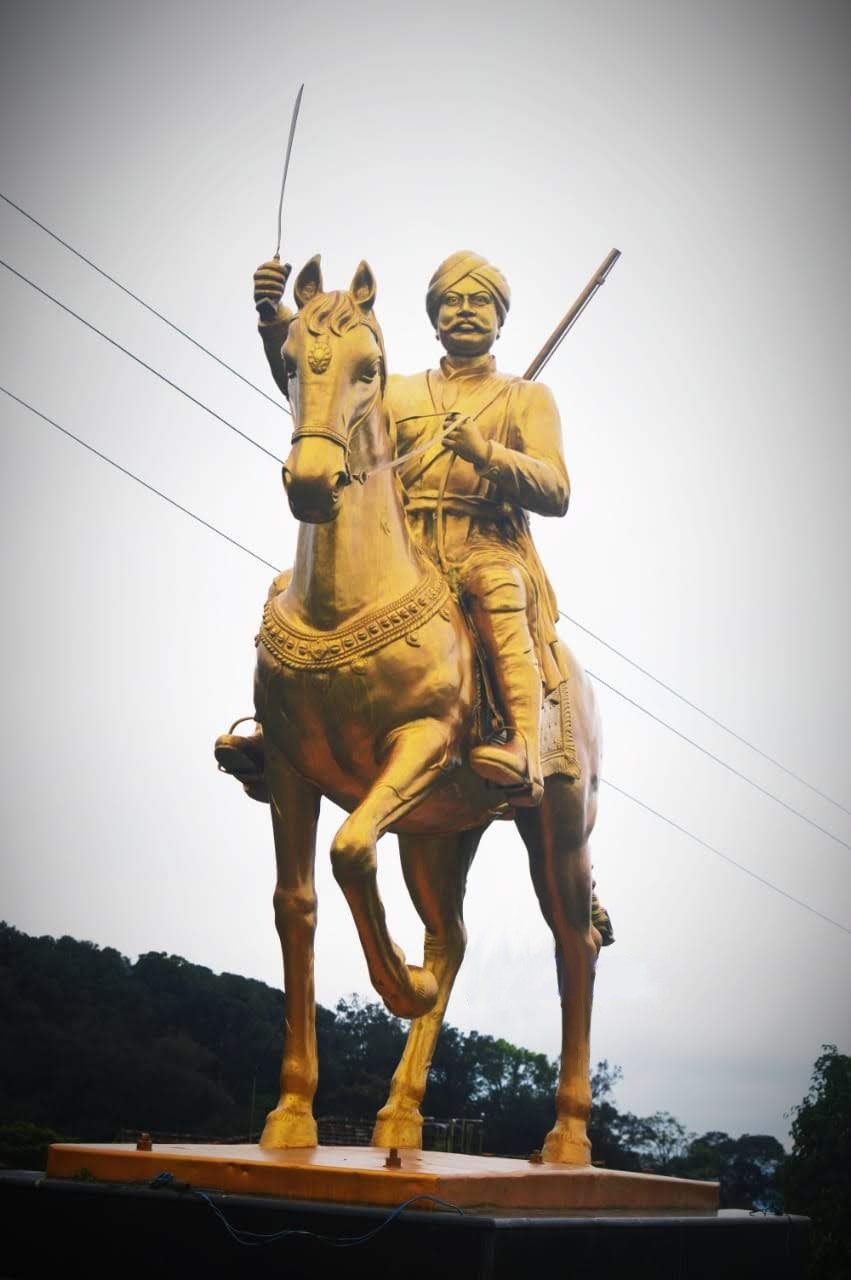Anindith Gowda Kochi Baarike

In the times when tyrants are projected by “secular” interests as heroes who safeguarded Bharat’s interests, it is imperative that we fact-check about the actual Freedom Fighters whose tales of valour have been hidden then due to British Iron rule and later the biased history writing (continued from The British colonial times).
One such incident is The Amara Sulya Freedom Movement of 1837 against The then British East India Company (that is twenty years before what is now considered as the first war of Independence).
While we are able to consume in the mainstream about some individuals whose very portrayal as ‘Freedom Fighters’ is questionable, the many other brave souls from different parts and walks of life, who died fighting for Bharat and protecting Bharat’s Civilisation from ‘outside’ force have not been given their due share of respect even in what’s touted as the post-colonial world.
For this, we need to revisit the past to examine and share the facts that have been hidden by “those who were writing history so far.”
We are familiar with the two years 1857 and 1947 (not to mention the years in between) and the hardships faced by Bharatiyas under the rule of The British colonisers. Before the crown’s total take over, movements had sprung up in The Bharatiya soil against the then British East India Company. One such historical incident which has been replaced with the British perspective and later corrupted by Marxist perspectives on Indian history is The Amara Sulya Freedom Movement of 1837.
The Amara Sulya Freedom Movement (recorded as The Canara-Coorg Rebellion of 1837 in the English records) took place twenty years before what’s now known as the first war of Independence.
The then British Commissioner (1834) of Mysore State, Lieutenant-General Sir Mark Cubbon has made a note on Cotton’s report on the incident as follows- “Their design was to overthrow British authority.”
A fact-check (one that is not biased towards the left side of the political spectrum) on the polity of Bharat that is India post-independence is enough to reveal that this incident is not the only one to go missing off the pages.
An event like The Amara Sulya Freedom Movement is testimony to the fact that provoking the sentiments of the natives shall be the last reason for the personification of the worst nightmare of an ambitious expansionist, like the then British East India Company.
March and April months of 1837 witnessed the Movement that got its ignition from Bellare (part of present-day Sulya of D.K. District, Karnataka State). It was from Bellare after taking over the British Bungalow there, one group of Freedom Fighters marched to Baavutagudde of Mangaluru, the others proceeded towards the Bisle Ghat passage of The Western Ghats.
On April 5, 1837, Kedambadi Ramaiah Gowda, the freedom fighter who led the formation to Mangaluru lowers the union jack. It is instrumental (principal as the British would later go on to record) establish a rule desired by the natives for 13 days. What’s noteworthy here is Kedambadi Ramaiah Gowda hands over the administrative authority to the Banga-Arasa to take the reins (as had been the custom for centuries). This exemplary event upholds the harmony the people had despite distinct cultural practices.
The other formation under the command of Koojugodu Kattemane Appaiah Gowda, Koojugodu Mallappa Gowda (Descendants of Keladi Nayaka Parampara) and joined by Subedar Guddemane Appaiah Gowda make plans to re-capture the Madikeri Fort from the clutches of Capt. Le Hardy of the East India company.
Along with their supporters, they proceed through the foothills of The Western Ghat covered with thick forest, slush, and steep inclines (not to mention the harsh/unpredictable weather in the hilly forest).
It is here that the military of the East India company catches hold of Subedar Guddemane Appaiah Gowda, who is executed publicly in the Madikeri Fort (Kodagu) premises on October 31, 1837.
Kedambadi Ramaiah Gowda, the freedom fighter who lowered The Union Jack was deported.
183 years later, nothing as a fitting tribute remains in the public domain in or at Mangaluru. Added to this, the petty fights on the divisions of caste, language, and other such factors seem to be on the rise.
Needless to say, this is not something any freedom fighter has ever wanted (petty fights among Bharatiyas in the name of distinct characteristics). The Amara Sulya Freedom Movement is an exemplary reminder in history that saw the coming together of the people of Kodagu, Tulunadu (parts of present-day Kasargod of Kerala State included) and part of the then Mysore Provincial boundary. But Capt. Le Hardy, a trained military strategist saw the addition of caste angle by terming the Freedom Fighters as rebels, openly practising hatred against the caste, cultural practices (particularly bringing a break in the centuries-old martial practices) of those who fought for freedom and ensuring that, the Freedom Fighters and their native region was left out of the ideas and implementations of development and progress.
This saw a strict watch by the British over the martial cultural aspects of Sulya until the time of Lord Irwin.
Clearly it sums up that, the ones who termed Bharatiyas as rebels in the soil of Bharat, i.e., The British, were aware of the potential of a unified Bharat and that’s precisely why they headed in the direction of totally dismantling any attempts they found would lead to the natives reconciling with their true Bharatiya identity.
The systematic disconnect to Itihaasa/what happened has rendered the society deprived of fact-checking, and that’s what enabled the ‘winner’ to write history with the addition of ingredients like divide and conquer, what’s understandable though is the fact that until they (the colonisers) were there, they had induced fear in the minds of the natives on the consequence of talking about Self-respect and The Bharatiya soil, Bharatiyata.
But, what’s stopping us from revisiting, in other words, to carry out historical revisionism today?















Comments